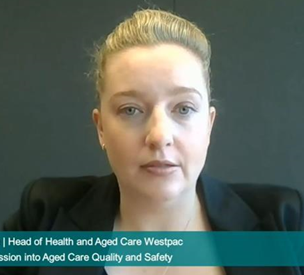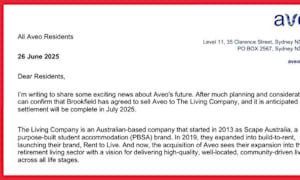 Opinion by Chris Baynes
Opinion by Chris BaynesCEO, DCM Group
The aged care sector has many problems. One of the biggest however is the fragility of RADs and the rapid, dire impact of the new trend of net RAD outflow.
The Government has a $30 billion exposure, because it is the guarantor that aged care operators will pay back the departing RAC residents.
But what of the banks who have lent to RAC operators, knowing they will be using those RAD funds to refurbish or a new build?
How do you call in a multi-million-dollar loan when the operator has no cash surplus and no cash flow?
But is a collapse likely to happen?
$30B house of cards
In last Friday’s Royal Commission, Cam Ansell from Ansell Strategic revealed his tracking of a 10% sample of operators across 16,000 places for the seven months 2 March to 23 August this year (pictured above) showed a 5% fall in occupancy – from 94% to 89% and the declining net RAD inflow.
“Every resident that is discharged is not being replaced and that has an obvious cash flow consequence if you’re having to repay a lump sum and someone doesn’t come in to pay a new lump sum. That’s a direct outgoing,” he said. “The majority of them are not electing to pay a lump sum.”
Chris Mamarelis, CEO of Whiddon Group said about RADs on Monday at the Royal Commission:
“…and right now, with the right conditions, the right economic conditions, the right changes socially, the right changes to perception, there is a house of cards, a $30 billion house of cards that we are sitting on.”
Banks do have concerns
ANZ has $3 billion in loan exposure to the aged care sector, Westpac $2.3 billion, NAB $2 billion and CBA $1.7 to $1.8 billion – all up $9 billion.
Sam Morris from ANZ, backed up by the other three bank witnesses, responded to questioning about RADs:
“At this point we don’t see it as a large issue, although that being said, forecasting out ahead, as we’ve just been discussing cash flow, we do have concerns with falling occupancy and continued change in RAD and DAP preferences, that liquidity will be more of an issue for operators.”
 Thea Hordern (pictured) from Westpac said:
Thea Hordern (pictured) from Westpac said:
“To us, key is obviously if the outflows were outweighing the inflows, which is why we very carefully continue to monitor both the RAD/DAP mix because that obviously can have a significant impact on a provider as well as key occupancy levels”.
With new aged care builds and refurbishment expenditure currently at $5 billion a year (as noted by the Royal Commission), the Big 4 are mightily exposed with nearly two years’ worth of development funding for the sector.
And they will know they have a problem early – ANZ pointed out it expects the RAD inflow to pay back a development loan within three years. A break in inflow will become apparent fast.
Banks gun shy of small operators
The Big 4 openly stated they prefer to lend to big operators and are very careful of smaller operators. The big clients have diversified risk, meaning non-aged care assets and balance sheets to call upon.
There are two implications here – the first is that big operators may find their charitable work in other areas suddenly under extreme pressure if banks want their money back (witness PresCare QLD’s decision to get out of residential aged care just six weeks ago, to protect its other services).
The second is, already gun shy, the banks will not support smaller operators going forward. Indirectly, the banks are putting a gun to the sector to consolidate, and fast.
Chris Mamarelis is not an excitable man. To say we have a $30 billion ‘house of cards’ in a Royal Commission hearing is a big statement.
We have a new Budget in 11 days' time. Will the Government shore up its financial exposure by giving more income to operators to cover their bank exposure to RADs? If Cam Ansell’s trends continue, they must. Imagine the loss of confidence by the public in RADs/bonds if the Government has to step in to rescue RAD outflows.
The house of cards will truly collapse.










